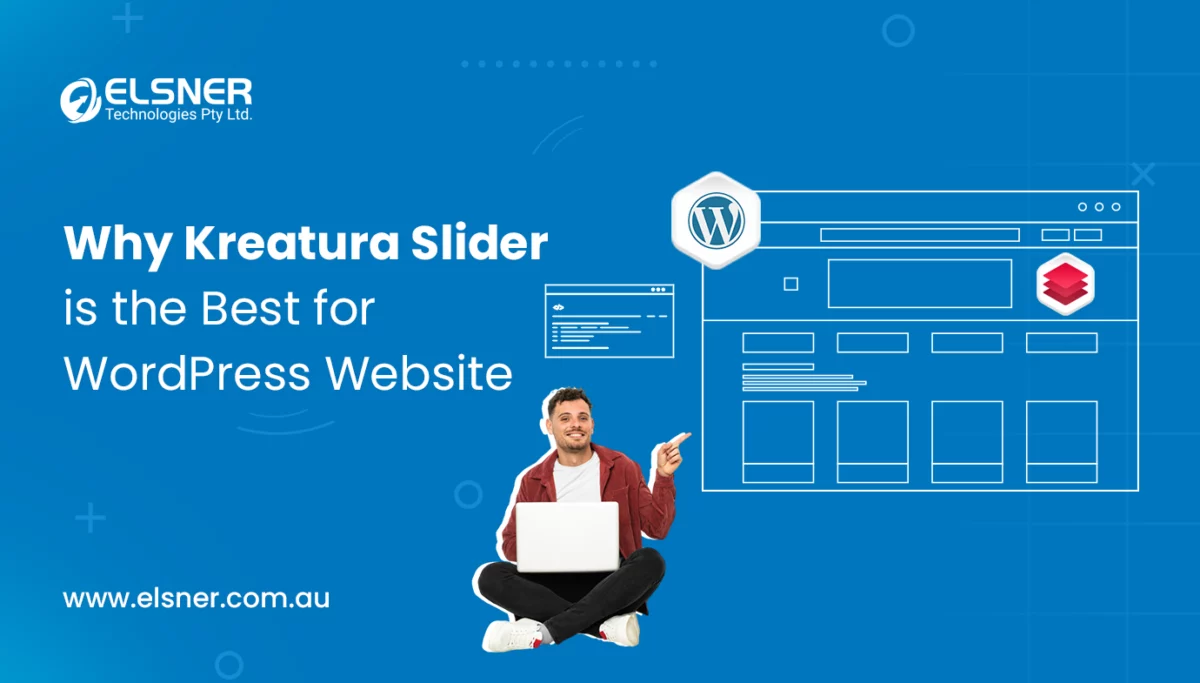PPC Budgeting: How to Maximise Your Ad Spend Effectively
PPCIn Pay-Per-Click advertising, the appropriate management of the budget is fundamental to the success of the campaigns, as well as many other parameters. In the absence of a proper budget, campaigns may demand too much money or pressure the final customer for useless actions that do not contribute to valuable conversions. Dividing budgets among PPC campaigns is an effective tactic that allows companies to spend more on ads where they can guarantee results, resulting in favourable outcomes for the business.
This article will address the primary elements of PPC campaign budgeting with a focus on the purpose of budgeting campaigns, selecting appropriate sources/ media, managing and distributing budgets, and common budgeting mistakes. Following such measures with the help of PPC company Sydney allows for the maximization of efficiency in PPC advertising, contributing to business growth while also giving the company control over its ad spending.
How To Effectively Manage Your PPC Budget?
1. Establishing Realistic PPC Budget Goals
Let’s begin with the project and set PPC budget goals. Whatever the purpose, whether to increase brand awareness, attract more prospects, or make more sales, a budget will be needed to achieve such goals.
Define Your Campaign Objectives
Setting objectives allows restraints in terms of PPC budgeting. Such goals can be:
- Brand Awareness: Increase reach and impressions.
- Lead Generation: Increase page views for data collection through landing pages or other forms.
- Sales or Conversions: Concerned with selling goods or services.
These goals differ in the approach and budget that should be devoted to attaining them. For example, budgets for brand awareness campaigns may focus more on reach, whereas lead generation campaigns may narrow to specific channels that convert.
2. Take into Account Overall Industry Trends and Contenders
Budgeting effectively is not possible without knowledge of the industry cost per click (CPC) and how much competitors are spending. First, look for experts for CPC and cost per thousand views (CPM) in the industry such as PPC company Australia, then that will help in giving realistic figures. For instance, on Google Ads, the cost per click (CPC) depends on the bidders, with some industries like legal services going as high as 6.75 for every click, whereas eCommerce industries like retail come close to 1.16.
Working out a Budget for Pay Per Click/PPC Advertising
To ease the estimation of budgets, the following formula is commonly used:
- Set Your Target Conversions: Decide how many monthly conversions will be targeted.
- Estimate Conversion Rate: You calculate, or you guess, your conversion rate.
- Determine Average CPC: Find out the average CPC in your industry or use results from older campaigns.
The formula becomes, given these values:
Daily Budget= ![]()
When multiplied by thirty, this daily estimate gives origins for the monthly budget range.
3. Selecting the Appropriate PPC Platforms within the Given Budget Limits
Each provided PPC system offers services in various industries, and audience targeting is distinctly different. Hence cost-wise offering is diverse. If one wishes to make the best out of the budget set, then the right choice of a platform should be made with the help of PPC Services Australia.
Google Advertising
If reach is concerned, no other advertising platform transcends that of Google Advertising thanks to its pay-per-click advertising and pay-per-impression advertising. In addition, competitive keywords usually have a high cost per click because everyone wants to show that keyword, and there is high competition. Google Ads is ideal for advertisers with global coverage or larger markets and, thus, big budgets.
Microsoft Advertising
Microsoft Advertising (formerly known as Bing Ads) tends to have reduced CPC rates because of comparatively less competition. This is perfect for some associated audience segments because they are slightly older and in a higher income bracket. For niche markets or even spending-conscious businesses, Microsoft Advertising is perfect.
Social Media Ads
Any advertising on platforms such as Facebook, Instagram, or LinkedIn has different CPMs and flexible budgets, making it suitable for campaigns that create awareness and those that focus on engagement. Facebook has an average CPC of $0.97, while LinkedIn has an average CPC that is higher due to the nature of the audience. Social media ads also have very effective targeting options.
Amazon Ads
At best, Amazon Ads can be an excellent asset for eCommerce businesses and great for PPC budgeting. It offers unique ad placements; the ads will appear directly within the search results or product pages, really increasing the reach among the shoppers. The budget requirement of Amazon is flexible, but its cost can change with competition in specific product categories.
Top Strategies for Managing and Allocating PPC Budget
Effective budgeting goes beyond merely determining expenses. Implementing PPC Management Strategies ensures strategic allocation of the budget across different keywords, geographical locations, and various times, maximizing the utilization of every cent spent.
Target High-Intent Keywords
High-intent keywords are likely to generate conversions even though they have a higher CPC. For instance, “buy [product name]” or “best [service] near me” reflects high intent and is likely to give a reasonable conversion rate, according to PPC agency Sydney. Though more expensive, targeting high-purchase-intent keywords gives a better ROI because they capture users ready to convert.
Establish Budget Limits and Cap Bids
One of the great PPC budget tips is the establishment of budget limits on a daily basis and across an entire campaign. This goes a long way in controlling the chances of incurring losses and ensures that one does not use up the budget within a short time. Many of the popular platforms, such as Google and Microsoft, provide for the application of daily budgets and bid limits, which are very effective in the management of costs.
Take Advantage of Geo-Targeting and Ad Scheduling
Geo-targeting allows for limiting the locations where the advertisements will be displayed, which translates to better utilization of advertising budgets in the geographical areas with higher conversion rates. Likewise, ad scheduling from PPC Company Australia enables you to place ads at certain times when the activity is likely high. A local restaurant, for instance, would run ads only for certain locations and specific times, like around meals.
Leverage the Power of Exclusion
Negative keywords are used to prevent advertisements from showing up in inappropriate searches and displaying them where the user is unlikely to perform a conversion For instance, again, if a business is targeting users ready to buy only premium products, it would make sense to ban words like ‘cheap’ or ‘discounted’ to control useless cost in their advertising budget.
PPC Bidding Strategies to Control Costs and Improve ROI
An aspect of PPC Budgeting that is greatly dependent on one’s bidding strategy is one’s cost per click or cost per impression. Listed below are some examples of approaches that could be used:
Manual vs. Automated Bidding
With manual bidding, one can control the cost of each click for each keyword and concentrate efforts on those keywords that yield better results. In contrast, AI-controlled bidding adjusts figures based on the set purpose (for instance, increasing the number of conversions). To achieve PPC Campaign Maximum Sales, combine additional automated bid control strategies for large-scale campaigns with manual bid control for those that are highly sensitive to spending, with the help of a PPC agency Sydney.
Cost-per-click (CPC) Bidding
In CPC, you define the upper limit one is willing to pay for every click. Such strategies are widespread in direct-response campaigns where the clicks are associated with conversions. It helps to contain costs and aids in the placement of ads.
Maximizing Impressions with CPM Bidding
CPM (cost per thousand impressions) bidding is helpful in campaigns aimed at building a presence. In CPM, payment is made for every thousand views regardless of clicks which is cheaper if the concern is not on clicks but viewership only.
ROAs Bidding
Instead of the usual CPA strategy where the advertiser is asked to spend for a certain category of acquisitions, return on Ad spend – PPC ROI strategies, on the other hand, look for ways to reduce spending while increasing conversions. This is perfect for businesses that have a limited budget or target banks of business monetary investments towards secured returns on advertising strategies.
Optimise Ad Spend with Testing and Data Analysis
Testing and analysis are critical in optimally utilizing your PPC budget and increasing the returns.
A/B Testing Ads
When A/B testing examples in actual campaigns show their impact, A/B testing becomes an essential tool. In practice, the included variations of ads may be given a meaning where one or several ads include some testing purpose components, which may produce the so-called ‘halo effect.’
Analyzing Key Metrics
Different metrics such as cost per click (CPC), click-through rate (CTR), conversion, and return on advertising spend (ROAS) assist in evaluating the effectiveness of the campaign. These metrics when checked constantly under a PPC company Sydney help to understand which performance levels require budget cuts for improvement.
Adjusting Budget Based on Data
The readjustment of the budget must depend on the results of the particular campaign. For instance, when some advertisements are more effective than others in driving conversions, it is advisable to transfer part of the budget to those advertisements. Incorporating Local PPC Strategies can further enhance the effectiveness of budget allocation by focusing on location-specific ads that yield better results. This approach ensures that the budget is utilized where it is most impactful.
Overlooked PPC Budgeting Pitfalls
Reasonable budgetary control also means avoiding familiar mistakes that tend to stop excessive wastage of ad expenditure. Some of them include:
Not Adding Negative Keywords
Failure to include negative keywords can result in unnecessary expenses because of clicks that do not result in any conversion. Make it a habit to frequently revise your negative keyword list to avoid wasting funds on poor-quality clicks.
Not Tracking Conversions
Conversion tracking in a PPC campaign is the only way to understand the return on investment. Without it, an organization cannot measure the productivity of ad spending and make adjustments to its budget.
Inadequate Retargeting
Retargeting is effective even when the visitor to your site has not converted, as it keeps your brand in plain view of the consumer who has interacted with your brand before. It is cheaper as the users to be targeted are those who have some knowledge of the brand, hence the easy conversion.
Setting and Forgetting Campaigns
A “set it and forget it” attitude can be inefficient because PPC campaigns need to be monitored and tweaked regularly to hold the campaigns in line with budgetary and performance requirements.
Bottom Line
PPC budgeting is more of a learning curve: setting goals, trying different strategies, and reviewing results. Once you set realistic budget goals, choose the right platforms, manage your budgets wisely, and regularly optimize with the help of PPC Services Australia, businesses can make PPC advertising a powerful, cost-effective tool for growth. As the digital landscape evolves, so should your budgeting strategies—experiment, track, and refine to achieve sustainable success.


















